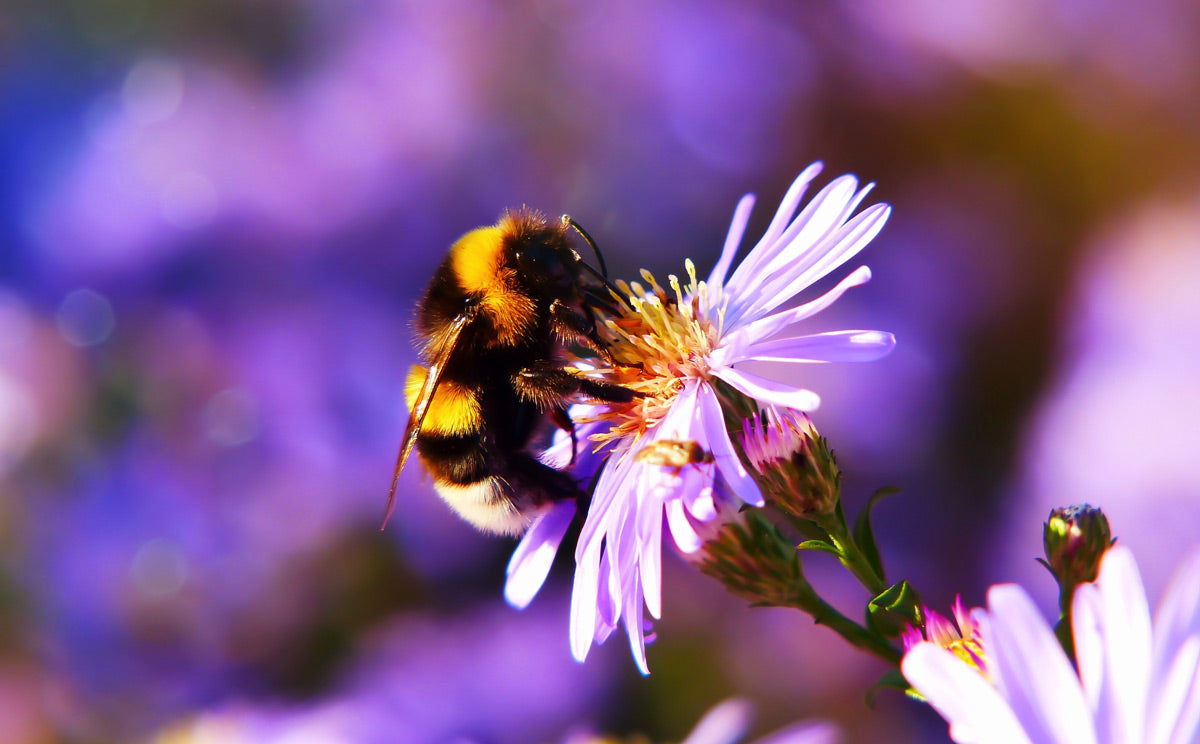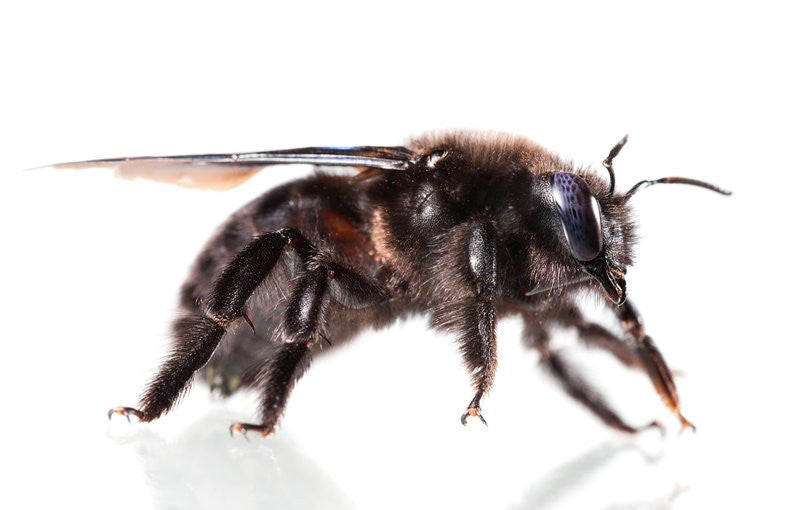Not All Polinators are Created Equal: The Honey Bee vs The Carpenter Bee
“Isn’t it bad to kill bees?”
This is a question our customers sometimes ask.
The truthful short answer is yes. The world’s pollinators are in crisis. And without pollinators, our diets would be extremely limited. Traditionally, honey bees have been the largest pollinators. Within the past decade, their populations have suffered, in some areas by as much as 70%. Colony collapse disorder and certain chemical pesticides are known to be the culprits. The loss of bee pollinators would be catastrophic to the human population. Saving the honey bees is a tremendously important endeavor that we support wholeheartedly. (1)

However, the honey bee is very different from the carpenter bee. In fact, a honey bee’s pollinating capability is far superior to that of the carpenter bee, and even that of most other bees in the world.
Why are carpenter bees not considered great pollinators?
Carpenter bees are known as nectar robbers. Nectar robbers are organisms that take the nectar from the flowers without entering the opening of the flower. They can penetrate the flower from the outside and drink the nectar. Carpenter bees avoid contact with the flowers’ reproductive structures, bypassing the pollination process.
Carpenter bees are a primary nectar robber, which means they will be the first to puncture the flower and rob the nectar. Honey bees, which are not equipped with the tools to lacerate the flowers themselves, notice these punctures and follow suit, extracting the nectar as secondary robbers. This again results in no pollination. (2)
Beyond not pollinating the plant, nectar robbing can diminish the strength of the flower and result in the flower breaking.
A study published by Environmental Entomology in 2014 evaluated the effects of nectar robbers on honey bees and crops. In a controlled study, researchers found that their crop had a better yield when pollinated by honey bees only than by either carpenter bees or both carpenter and honey bees. They also found that honey bees were 40% more likely to rob nectar when it was available from the lacerations left by carpenter bees.
The main fact remains that carpenter bees can pollinate. However, they are low pollinators and negatively influence the honey bee’s crucial role as a pollinator.
When faced with carpenter bees drilling through your home and causing damage, it’s hard to remember this. Many people whip out the pesticide and start a chemical war. This is not the best course of action for you, the carpenter bee problem, or the safety of the environment.
What are the alternatives?
Try placing a bee house in your garden, at least 50 feet away from your home. We recommend our bee lodges. They make excellent solitary bee homes for carpenter bee and mason bees, and look great when put in your garden. Placing them away from your home will draw some carpenter bees to nest there instead of in your home.
Using our carpenter bee traps around your home creates an effective 15’ radius of carpenter bee protection. Our traps ONLY work on carpenter bees. Honey bees, mason bees, bumbles, and every other type of bee will NOT be attracted to the trap due to our specific design.
So you can do your part to save the bees and protect your home with our products and have a clear conscience!
References:
- Save the Bees. (n.d.). Retrieved February 7, 2019, from https://www.greenpeace.org/usa/sustainable-agriculture/save-the-bees/
- Nectar robbing. (January 29, 2019). Retrieved February 7, 2019, from https://en.wikipedia.org/wiki/Nectar_robbing









3 comments
Jon
GREAT product! I plugged the holes in my house and hadn’t seen a single carpenter bee for a week. I still put up the trap to be safe. Honestly, I was a skeptic but within two hours there were two bees in the trap. . . . crazy!
Customer Support
@Catrina – It is pretty rare carpenter bees are nesting in grass. They prefer wooden structures. Unless the fence is wooden? If the fence is wooden, you may want to consider a carpenter bee trap. Depending on your location, it may not be as effective as in the spring as mating season is over for carpenter bees. If you find any holes, plug them as safely as possible. Hope this helps! ~Customer Support
Catrina
I just disrupted a nest of carpenter bees in my grass under the fence. I had a swarm of angry black bees around me. Yikes! I was wondering if I should just leave them Or if I should exterminate them? The nest is along a community path and many people go by during the day. Lots of kids and people with dogs.
Leave a comment
All comments are moderated before being published.
This site is protected by hCaptcha and the hCaptcha Privacy Policy and Terms of Service apply.